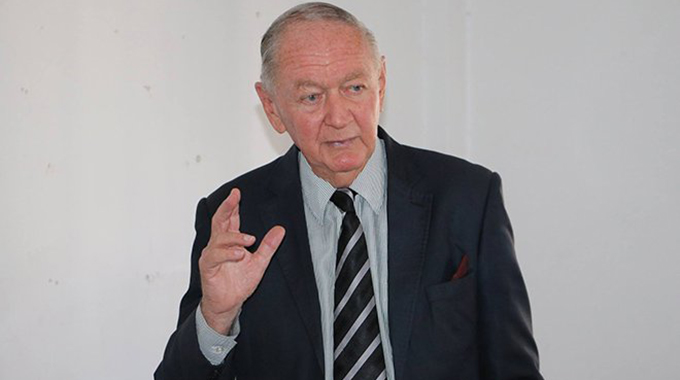
Golden Sibanda Senior Business Reporter
ZIMBABWE’s galloping rate of inflation will slowdown and come under control by end of this year on exchange rate stability, economic analysts have said.
Annual inflation quickened to 175,6 percent for June from 97,8 percent in May, as pass through effects of parallel market currency premiums took their toll on prices.
The country has witnessed rapid price increases since October last year when Government started reforms, including separation of nostro and domestic currency accounts, 2 percent intermediated tax, exchange rate liberalisation and the recent ban of the multi-currency regime.
Zimbabwe’s month-on-month inflation rate for June jumped to 39,26 percent, after gaining 26,72 percentage points on the May 2019 rate of 12,54 percent.
Monthly food and non-alcoholic beverages inflation rate raced to 55,07 percent in June 2019 from 17,63 percent a month earlier while month-on-month non-food inflation rate came in at 31,23 percent from of 10,12 percent in May, the Zimbabwe National Statistics Agency reported.
Sustained increase in month on month inflation has put a huge damper on prospects for significantly low inflation by end of this year, a least, in view of initial estimates.
Zimbabwe, which in February 2014 entered deflation, saw massive inflation take off in October last year when the rate jumped to 20,85 percent from 5,39 percent.
As pressure from currency premiums piled on unabated, the inflation rate spike kept a northward trajectory, breaching the 100 percent mark only last month.
Economist Eddie Cross said yesterday prices were likely to stabilise after exchange rates on the parallel market became more stable following last month’s currency changes.
Government last month reintroduced local currency (Zimbabwean dollar) and outlawed foreign currency transactions amid the threat of self redollarisation of the economy.
Prior to the multicurrency ban, Zimbabwe had used a basket of currencies dominated by the US dollar after replacing its inflation ravaged currency in 2009.
But as the economy recovered from a decade of meltdown, which lasted until 2008, consumption and demand for foreign currency grew inversely to supply of hard currency.
In 2016, the country started experiencing US dollar liquidity challenges, forcing corporates to use the parallel market to secure foreign currency.
And following a series of reform targeted policy changes, including separation of nostro and RTGS accounts, inflation took off at a fast pace in October last year.
Inflation continued to come under pressure from the wild swings in exchange rates on parallel markets, as the demand continued to far outweigh supply.
Mr Cross, however, said Government’s decision to ban the multi-currency system had brought respite to the exchange rate, especially on the black market.
This also benefited from liberalisation of the foreign currency trading through the interbank market, which has partially diverted forex trading to the formal market.
“The inflation rate was being driven by (parallel market) exchange rates, but that has been put under control through statutory instrument 142 of 2019,” he said.
Mr Cross said the US dollar to RTGS dollar exchange rate had come down from 15 to 1 to about 8,7 to 1 and is expected to keep tracking down.
“This stability will depend on what measures Government takes to maintain exchange rate stability and improve foreign currency supply to interbank,” Mr Cross said.
He, however, said if the key fundamentals in terms of maintaining exchange rate stability are put in place, prices of goods will stabilise going forward.
Former University of Zimbabwe lecturer and Government advisor Professor Ashok Chakravati concurred saying the economy had suffered from exchange rate instability.
“The rate has now stabilised and the interbank market is beginning to work so now that we have a more stable rate, we expect prices to stabilise,” he said.
He said that it was critical that the monetary and fiscal policies, in the mid-term review, prescribe measures to further consolidate exchange rate stability. Professor Chakravati said that following the currency changes introduced last month “naturally, prices will be expected to remain stable going forward.”
Harare economist Dr Gift Mugano said Zimbabwe was on course to achieving lower inflation by year end, until the exchange rates started rampaging.
Dr Mugano said a series of shock therapy economic reforms by Government since October 2018 had elicited adverse market reactions, which drove inflation.
“If we keep on doing that, giving those kinds of various shocks, we worsen the situation. Going forward, we should stop all those kind of shocks and surprises,” he said.
Other shock policy reforms he cited included pronouncements in the transitional stabilisation programme and liberalisation of fuel procurement.
He said that inflation would slow down on reduced aggregate demand for goods and services, which would however negatively impact growth prospects.
Dr Mugano said focus should now go towards boosting production and exports while substituting imports to reduce demand for foreign currency.
